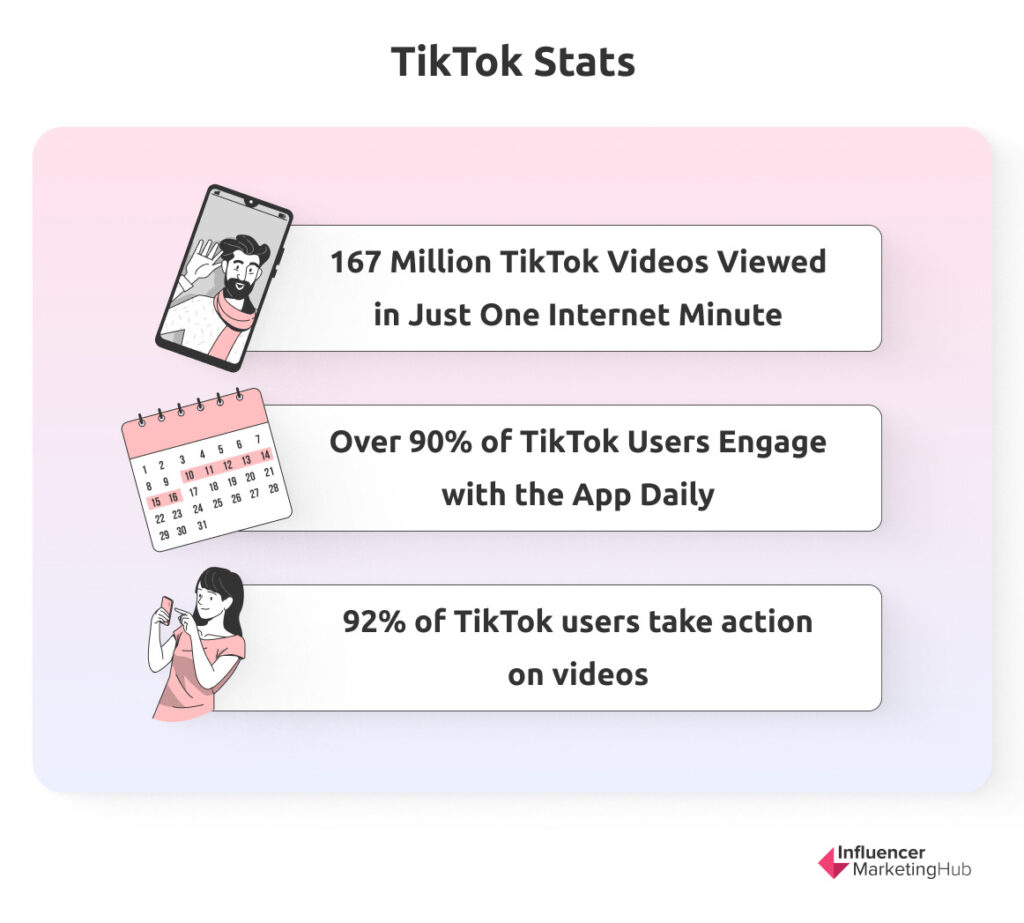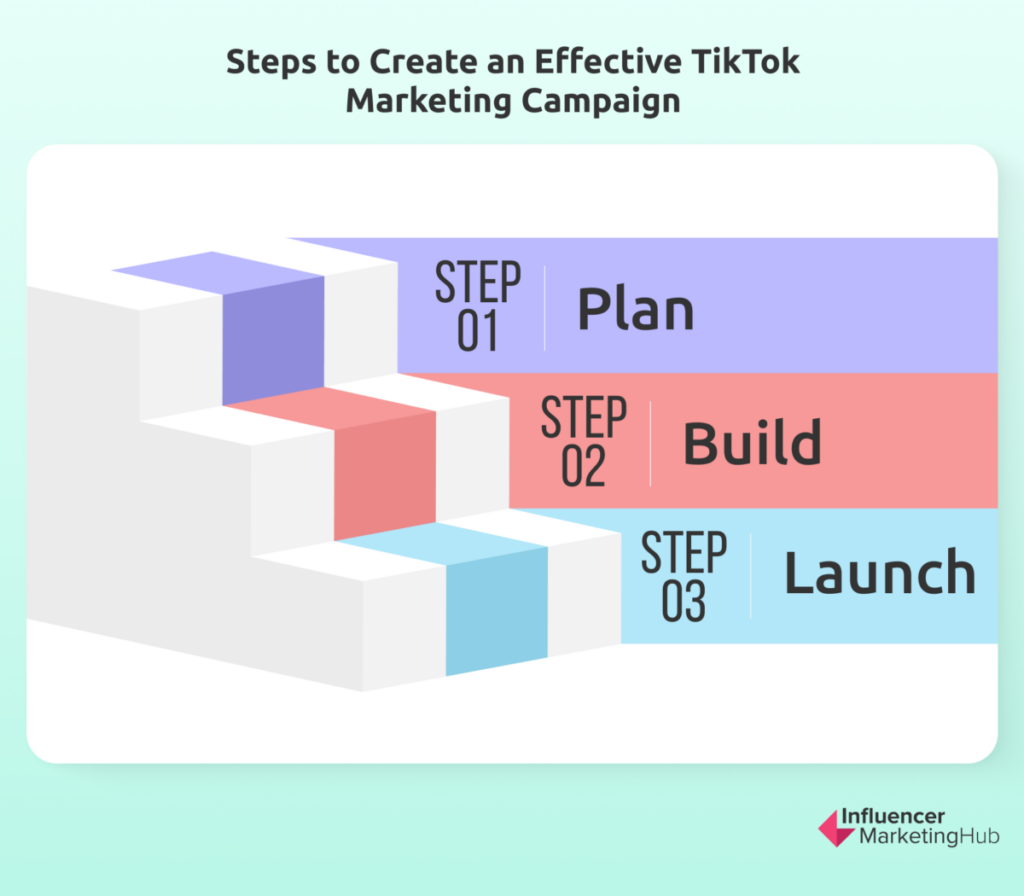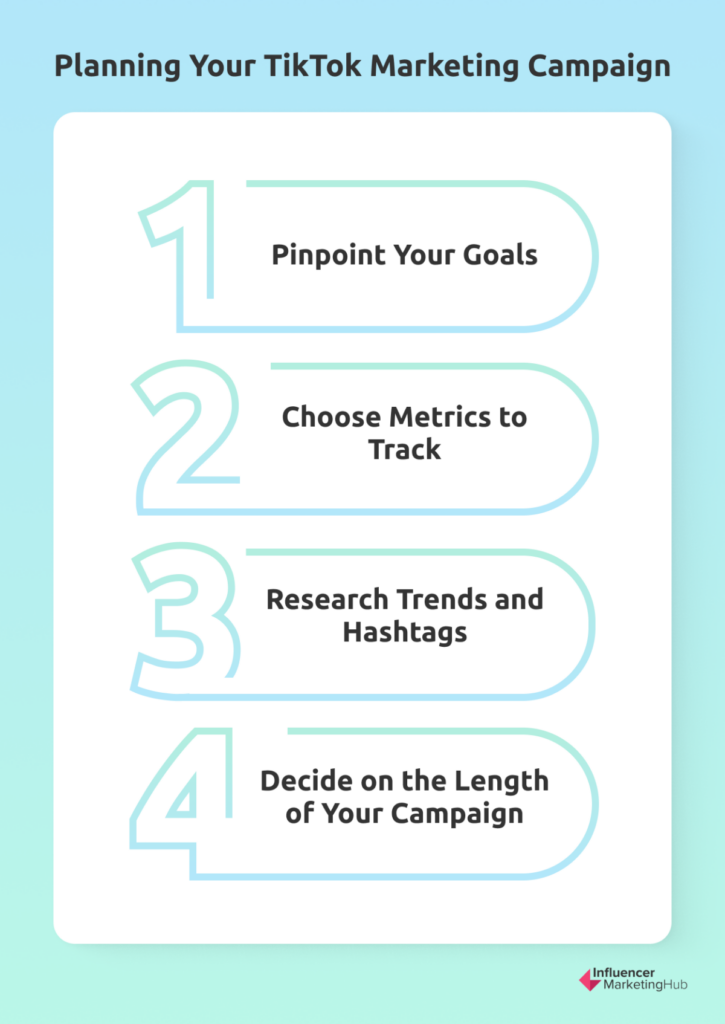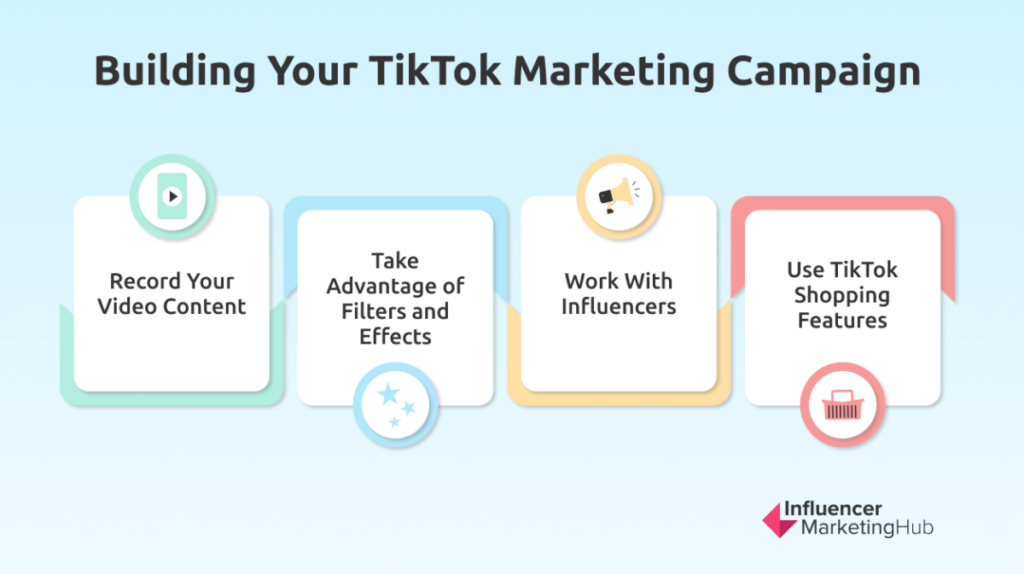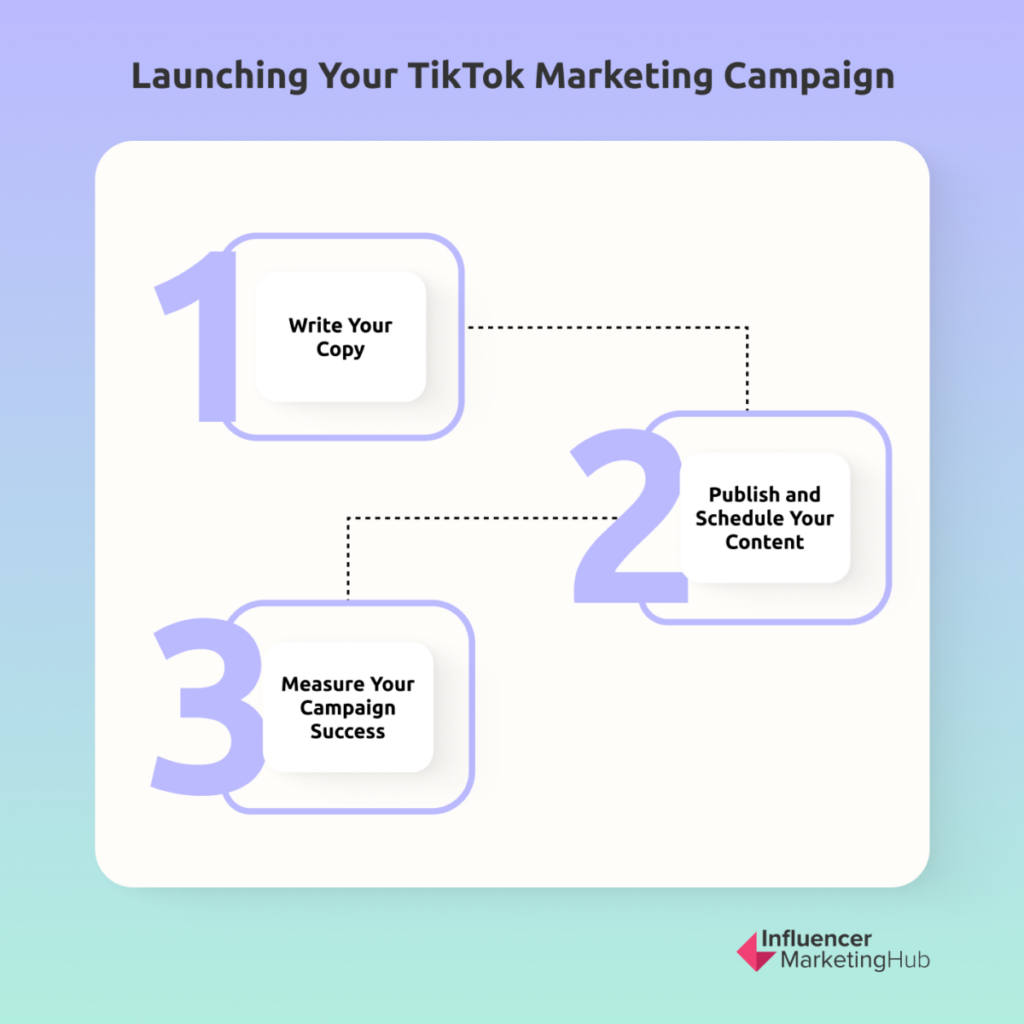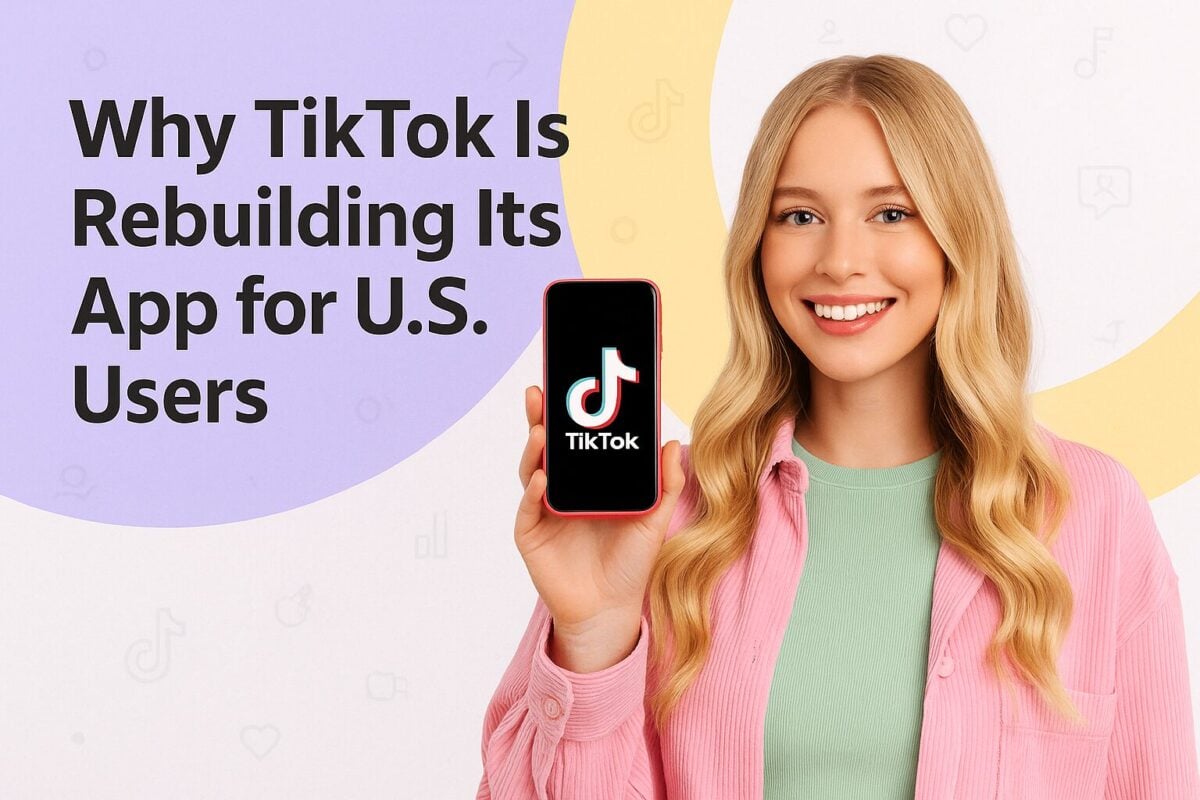TikTok users spend more than an hour and a half scrolling through the platform’s video feed each day. And as the fastest-growing social media platform with over 1 billion monthly active users, it’s no surprise that businesses are looking for ways to reach their audience on TikTok.
Brands and businesses are also increasing their TikTok marketing budgets. Our State of Marketing 2024 Report found that 50.6% of brands are allocating more than half of their budgets to TikTok.
And the best use for your marketing dollars on TikTok is through a TikTok marketing campaign. Throughout this article, marketers can learn how to take advantage of the rapidly growing and highly engaged audience on TikTok with a campaign that can easily promote and sell their products and services.
What is a TikTok Marketing Campaign?
A TikTok marketing campaign is a planned out and organized campaign of video content that promotes a specific product, service, collection, etc., to a brand’s target audience with a specified KPI in mind.
Here’s an example from Pair Eyewear, a magnetic glasses company that enables customers to easily change out the look and feel of their glasses and sunglasses. The company has been running an organic and paid TikTok marketing campaign to show off their product offering, all of which have a similar vibe but feature different people.
Here’s one example:
@paireyewear You can change a Pair as much as you want, even as often as you change your underwear! 😉 (📹: @mommydoesntdodishes ) #PairPartner #TheWanda
Here’s another where the brand has used a trending audio clip:
@paireyewear Don’t forget to tell Jake he looks bonita in the comments! 💐 #paireyewear #bonita #floralszn
These videos are part of an overall campaign to bring awareness to Pair’s product in hopes that interested customers will click over to their website and eventually make a purchase.
Why Launch a TikTok Marketing Campaign
Why create a TikTok marketing campaign? Let’s look at some Tiktok stats to see why it can be so beneficial to brands:
- 167 million TikTok videos are watched in a single “internet minute”
- TikTok generates the highest social media engagement rate per post
- 90% of TikTok users access the app multiple times a day
- TikTok is the top app for consumer spending
- 92% of TikTok users take action after viewing a video on the platform
- 2 in 3 users say TikTok inspires them to buy something even when they’re not actively shopping
- 50% of users have made a purchase after watching TikTok LIVE
TikTok’s user base is active, engaged, and ready to buy. So let’s dig into how you can create your first TikTok marketing campaign.
How to Create a TikTok Marketing Campaign
First things first, if you’re brand new to TikTok, you’ll need to check out our beginner’s guide. This will teach you how to navigate TikTok, create your own account, join in on challenges, and so much more.
We also have a guide on how to use TikTok that shows how to create different types of TikTok videos so you can easily get started creating content and engaging with your audience.
Once you’ve got your bases covered, you can start the first step—planning.
Step 1: Plan
You can’t create a solid marketing campaign without a good deal of planning. Follow along with each of these steps of the planning phase to start kicking off your campaign.
Pinpoint Your Goals
First things first, what are the goals of your campaign? If you’re brand new to TikTok, your goal might simply be brand awareness or growing your following. As you use the platform more and more, you might want to work on increasing conversions or traffic from TikTok to your website.
Choose Metrics to Track
Once you’ve picked your goals/objectives for the campaign, you need to select the social media metrics that will help you determine whether you’ve met those goals.
If your goal is to increase brand awareness, your metrics might include:
- Reach
- Impressions
- Comments
- Shares
- Follower growth rate
If your goal is to improve website traffic, metrics would likely be:
- Clicks
- Clickthrough rate
- Traffic sources
- Sessions
- Top pages
If looking to generate conversions, you might track metrics like:
- Number of sales
- Conversion rate
- Total conversions
- Clicks
- Understand Your Target Audience
Who is most likely to buy your product or sign up for your service? To create content that will specifically cater to them, you need to have a clear understanding of your target audience.
If you’ve been on TikTok for a while, you can utilize your in-app analytics to gauge some basic information about your followers. Head over to your profile in the TikTok app, then tap the hamburger menu in the top right corner to access Creator tools.
You’ll then tap Analytics under the General menu section. Here, you can see important follower demographics to make sure they line up with your product or service’s target audience.
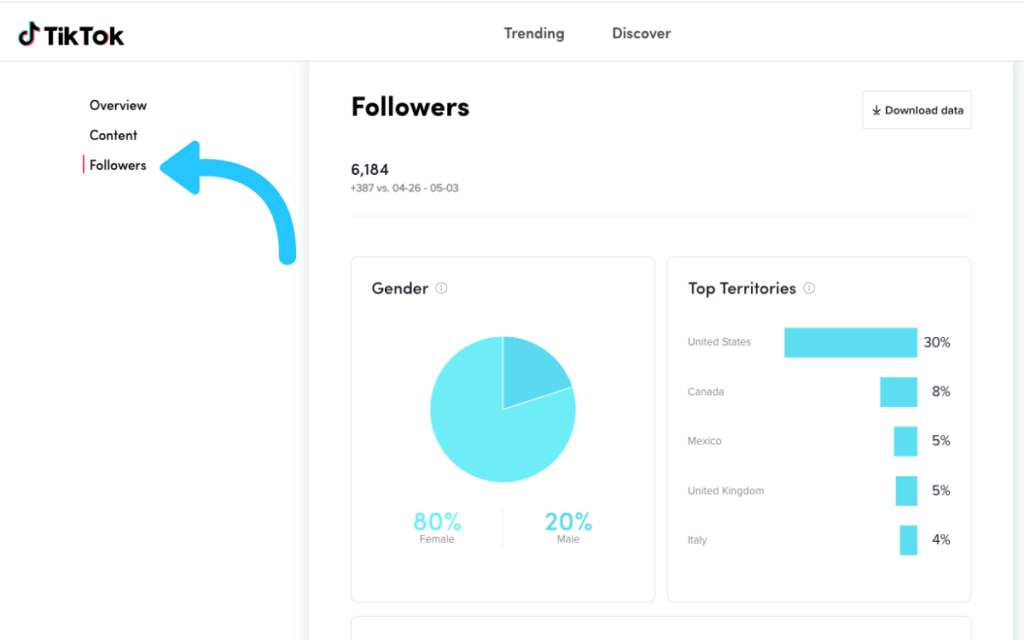
Source: later.com
Here, you’ll be able to see information like:
- Follower growth
- Gender
- Age
- Location
- Most active times
This data can help you pinpoint whether you’re reaching the right audience or if you need to tweak your content a bit in order to reach your target customers.
Research Trends and Hashtags
One of the most important parts of creating a successful campaign or strategy for TikTok is that you’re aware of popular trends and hashtags at any given time. This means you need to consume TikTok content regularly in order to stay on top of these trends.
You can also check out the Explore page to see what’s popular right now, or scroll down in the left hand sidebar to access the “Discover” tab with trending hashtags and audio clips.
Jumping on popular trends can help your video get seen by an even wider audience, increasing chances of it going viral and improving the overall success of your campaign.
Decide on the Length of Your Campaign
How long will your campaign last? And furthermore, how many videos will it include?
For example, you might decide to create a month-long campaign leading up to summer to promote relevant summer products. However, you might decide to post 2-3 videos each weekday in order to reach as many people as you can.
Or, you might decide to run a campaign that lasts all quarter, but only one video per week is part of the campaign.
It’s up to you to decide what’s going to work best for your team and its needs—you will also be able to identify the best cadence each time you start up a new TikTok marketing campaign.
Step 2: Build
Phase two or step two of creating a successful TikTok marketing campaign is to start building it out. Follow along with each tip laid out here to create a fully fledged campaign that’s ready for phase three—launch!
Record Your Video Content
The bulk of this section will be recording your video content. In the “Plan” stage, you should have researched trends and gotten a good idea of the types of videos to include within your campaign.
Now, it’s creation time.
Don’t record all of your videos at once, though. Take breaks, find different areas and backgrounds, and give yourself time for your full creativity to come through in every video. This part of the process could take you a week, depending on how many videos you’re creating, or it could take an entire month to fully build up your campaign’s backlog of video content.
Take Advantage of Filters and Effects
While recording your videos, don’t be afraid to take advantage of the filters and video editing effects that TikTok provides. This is a key part of what makes TikTok content so unique.
The platform offers an entire library of effects you can use while you record. Some are gamified, others are basic filters, and some are even more complex like a green screen option. Browse through all of the options and make lists of the ones you’ve seen used regularly to find effects and filters that make sense for your campaign’s content.
Other editing tools you should incorporate into your content include:
- Captions
- Voiceover
- Voice changers
- Text on screen
- Stickers
- Visual effects
- Timing effects (i.e., slo-mo or speeding up)
Play around with all of the options to create as engaging and entertaining of videos as you can.
Work With Influencers
The TikTok influencer marketing landscape is huge. In 2021, sponsored videos on TikTok reached 10.3 billion users on the platform, amassing over 1.3 billion views. There are tons of popular TikTok influencers and endless partnership opportunities.
Take advantage of an influencer search tool to find the best influencers to work with as a part of your campaign. You can easily share products with them and have them create content that you can then use as user-generated content in order to further improve your campaign’s results.
Use TikTok Shopping Features
If you’re promoting eCommerce products, you need to set up your TikTok shop and utilize their shopping features. You can seamlessly tag products in your videos for your video viewers to buy immediately, bringing in even more sales.
Get this set up before you launch so you can tag all included products in each video you publish within the next stage.
Step 3: Launch
Lastly, it’s time to launch your campaign. These last few steps will help you finalize your campaign and get it ready for your TikTok audience to view and engage with.
Write Your Copy
TikTok captions have a 2,200 character limit, providing brands and users alike with a great opportunity for giving context to their videos and including a compelling call-to-action. Be sure to use as many of these characters as you need to support your campaign.
Your caption is also where you’ll want to include relevant and trending hashtags to help increase the number of potential viewers your content will see.
Publish and Schedule Your Content
Once you’ve gotten all of your videos recorded, editing, and captioned, it’s time to publish and schedule your content. Since you’re planning out a campaign all at once, it’s a good idea to schedule your videos ahead of time so you don’t have to worry about remembering to publish them in real time.
Find a TikTok scheduling tool that works for your brand and choose the best days and times to post. Best practices dictate these days and times to start with:
- Monday: 6 am, 10 am, 10 pm
- Tuesday: 2 am, 4 am, 9 am
- Wednesday: 7 am, 8 am, 11 pm
- Thursday: 9 am, 12 am, 7 pm
- Friday: 5 am, 1 pm, 3 pm
- Saturday: 11 am, 7 pm, 8 pm
- Sunday: 7 am, 8 am, 4 pm
However, you can also check out your TikTok analytics to see when your followers are most active to get data catered to your specific profile.
Measure Your Campaign Success
Finally, you need to measure your campaign’s success. Go back to the goals you initially created and the metrics and KPIs you need to track for each of those goals.
You can do this using TikTok’s built-in analytics, your website’s analytics, as well as a comprehensive social media analytics tool. Put together a report or dashboard that helps you and your team get a birds’ eye view of the campaign’s success.
And if you’re not getting the results you’d hoped for, don’t be afraid to adjust the campaign. Perhaps your content is missing the mark. You may need to re-record or re-edit some existing content in order to improve the campaign’s overall success.
Launch Your First TikTok Marketing Campaign
Get started with your first big TikTok marketing campaign. Decide what to promote, create your content, and publish. Learn more about how to grow your TikTok following to reach an even larger audience and generate even more engagement and conversions.
Frequently Asked Questions
What is a TikTok marketing strategy?
A TikTok marketing strategy is a documented process for creating and sharing content on TikTok that a brand’s target audience will resonate with.
What makes a good TikTok marketing campaign?
A good TikTok marketing strategy or campaign involves these tips:
- Post consistently—TikTok itself recommends posting 1-4 times per day
- Try out different types of content
- Use trending video and audio clips
- Work with influencers
How much does a TikTok ad campaign cost?
TikTok ads start around $10/CPM (cost per 1000 impressions) with a minimum $500 budget per campaign. This means TikTok ads are one of the more expensive types of social media ads, but they can be worth it.
How long should a TikTok campaign be?
TikTok video ads can be anywhere from 5-60 seconds long. However, TikTok recommends keeping your video between 9 and 15 seconds in length.
How do you attract customers on TikTok?
A few ways to attract customers on TikTok include:
- Join in on TikTok challenges
- Use relevant hashtags
- Create short, digestible videos
- Hop on trends
- Interact with your audience

